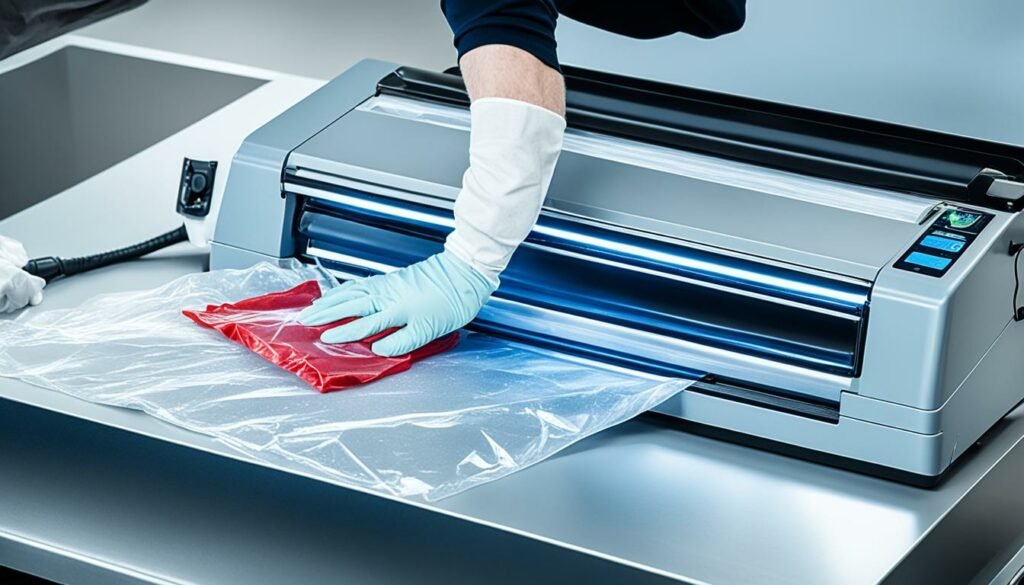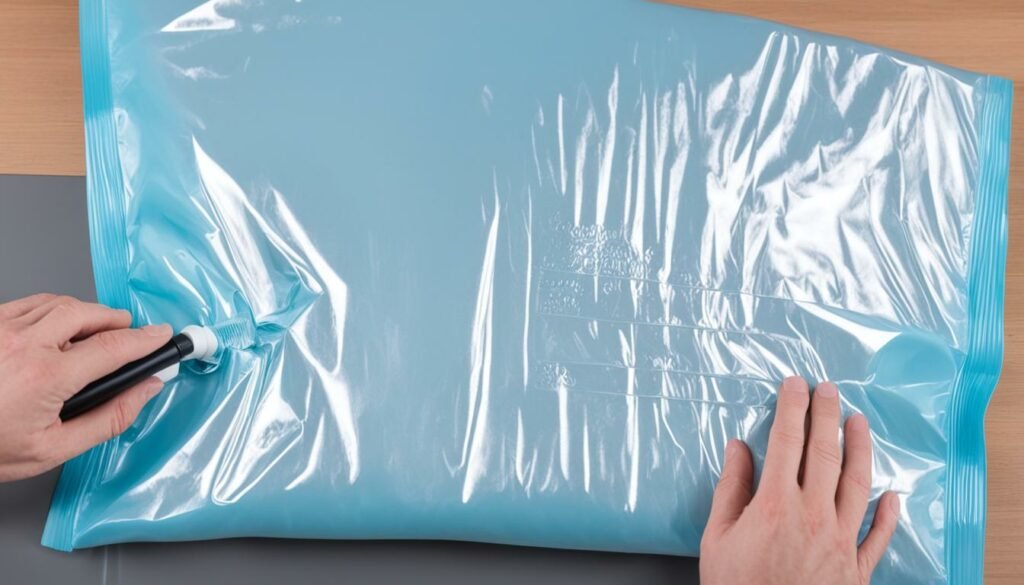Have you ever faced a vacuum sealer issue just before storing fresh produce from the farmer's market? The machine starts acting up out of the blue. This situation can be pretty frustrating, especially when we count on it to preserve our food. The good news? Fixing a vacuum sealer problem doesn't have to give us a headache.
Think back to the last Thanksgiving. We were wrapping up leftovers when our sealer started struggling. It couldn't make a proper seal. At that moment, it was clear our machine needed care too. Just like any other home device, our sealer needed some attention.
Knowing how to troubleshoot and maintain your vacuum sealer is crucial. It helps to avoid future issues. Whether we spot faults like incomplete seals, wrinkles on bags, or pressure loss, we should be ready to fix these. Doing so can make our favorite foods last longer. Let’s learn a few steps to diagnose these issues and improve our sealing process!

Common Issues with Vacuum Sealers
Finding out how to diagnose problems with a vacuum sealer is key. If it's not vacuuming or sealing well, air trapped in the bags can spoil food. This can happen due to several reasons like a broken lid, cord problems, and more. By checking your vacuum sealer regularly, many issues can be avoided.
Now, let's dive into the possible causes and the fixes:
| Issue | Possible Cause | Solution |
|---|---|---|
| Incomplete Seals | Improper bag placement or food particles | Ensure proper bag placement and clean sealing strip |
| Wrinkles in Bag | Uneven bag texture or content distribution | Switch to high-quality bags and smooth out wrinkles |
| Loss of Vacuum Pressure | Poor seals, bag punctures, or vacuum pump issues | Inspect seals, check for punctures, and maintain the vacuum pump |
| Vacuum Sealer Heating Issues | Overheating or worn heating elements | Follow manufacturer's instructions and inspect heating elements regularly |
| Vacuum Bag Sealing Issues | Incorrect bag type or overfilling | Use recommended bags and avoid overfilling |
Knowing about these common issues with vacuum sealers can prevent breakdowns. Clean the seal bar often, inspect for damage, and store properly. Use good bags and don't overfill them. This helps in effective sealing.
Vacuum bag sealing issues are usually linked to how well we maintain the sealer. Understanding and regularly maintaining the sealer can stop issues early. If problems continue, expert help ensures a smoothly sealed vacuum bag.
Addressing Incomplete Seals
Incomplete seals are a common issue with vacuum sealing machines. This happens when the sealer bag is not correctly placed. Also, a dirty sealing strip can cause problems. To get a perfect seal, you need to pay attention to these areas.
Ensuring Proper Bag Placement
To seal air-tight, the bag must be placed correctly. Lay the bag flat over the seal bar. Avoid any folds or creases. It's crucial that the bag has some extra length beyond the seal bar.
Before sealing, make sure the bag is smooth. This keeps the machine from jamming and ensures a good seal.
Cleaning the Sealing Strip
Sealing strips should always be clean. Dirt can affect the sealer's performance. Use the recommended cleaning solution to keep the strip free of dirt. This step is essential for food safety and a well-working machine.
Regular cleaning and maintenance are a must. Wipe down the seal bar often. Clear any debris. Proper maintenance prevents big problems and makes your machine last longer. Always follow the manufacturer's maintenance guides.
| Maintenance Frequency | Task | Purpose |
|---|---|---|
| Daily | Wipe Sealing Strip | Prevent Debris Build-up |
| Weekly | Check Bag Placement | Ensure Proper Sealing |
| Monthly | Inspect Seal Bar | Avoid Seal Issues |
By keeping up with maintenance, you can avoid and solve common problems with vacuum sealers. A well-maintained sealer works better for longer, ensuring your food stays fresh.
Troubleshooting Wrinkles in the Bag
Getting rid of wrinkles in a vacuum sealer bag is key to a good seal. Wrinkles might make the bag not seal properly. This could shorten how long your food stays fresh. So, tackling wrinkles is important for a tight and effective seal.

Smoothing Out the Bag
Keeping the seal area smooth and free of wrinkles is critical. First, make sure the bag is flat and without folds. This is done by placing it smoothly over the seal bar before closing. Swirls and folds are often caused by not placing the bag properly.
Folding the bag's edges can help too. It prevents spills and makes the seal stronger.
More tips on fixing wrinklescan be found here
Choosing High-Quality Bags
Pick quality sealer bags to avoid wrinkling and get better seals. It’s important to choose the right bag size. If the bag doesn’t fit correctly, it will create unnecessary folds.
If you’re sealing sharp things like meats, you might need extra layers to stop the bag from tearing. Also, using top-notch bags of the right size reduces common sealing problems.
For top-notch results, use oxygen absorbers with dried foods. These absorbers remove extra oxygen, keeping your food better. Remember, following the guide from the bag’s maker helps keep your sealer working right.
Handling Loss of Vacuum Pressure
Noticing a drop in vacuum pressure may hurt your sealer's performance. Let's look at some key ways to fix this. Regular checks and quick problem-spotting help keep your sealer working well.
Checking for Punctures
First, check the bags for any holes. If air can get in, the vacuum won't hold. Remember to be gentle with your bags, since roughly 33% of people say mishandling them causes issues. Thoroughly checking each bag can save you trouble later.
Inspecting the Vacuum Pump
If your bags are fine, it's time to look at the pump. Problems with it often lead to a weak vacuum. A close look might show if it needs fixing. Some users found that keeping the pump and seals clean helped. Sticking to a plan, like watching pumpdown and rate-of-rise curves, offers clues about the system's condition.
Listening for Air Leaks
Listen for any sounds that suggest air is sneaking in. These noises could mean you're losing vacuum. Checking the gaskets is vital, as 44% of users say it's a likely point of failure. Using help from Residual Gas Analyzers (RGA) can make finding leaks easier.
By following user advice and these steps, you can keep your sealer in great condition. Regular maintenance and gentle handling can avoid pump trouble. This helps your sealer do its job well for a long time.
FAQ
What common issues can cause a vacuum sealer to not function correctly?
A vacuum sealer might not work right if its lid is damaged or if the power cord is faulty. Worn gaskets and seal bar problems are common too. Overheating and using the wrong sealer bags can also be troublesome. It's key to take care of your sealer with regular checks to avoid these issues.
How can I diagnose problems with my vacuum sealing machine?
First, check if the lid is damaged and look at the power cord. Make sure the gaskets and the seal bar are okay. Regular checks help identify and fix these problems early.
Why is my vacuum sealer not sealing properly?
If your vacuum sealer isn't sealing right, the bag might not be placed properly. A dirty seal strip or seal bar issues can also cause this. Check that your bag is flat, the strip is clean, and the machine's temperature is set correctly.
What should I do if my vacuum sealer is overheating?
To avoid overheating, let the sealer cool between uses and keep it well-ventilated. Don't overload it. If it keeps overheating, check the manual or get professional help.
How do I address incomplete seals on my vacuum-sealed bags?
Dirty seal strips or wrong bag placement can cause incomplete seals. Clean the strip often and make sure the bag is flat and smooth on the seal bar.
What are some tips for ensuring proper bag placement in a vacuum sealer?
To place bags well, put them evenly on the seal bar with no wrinkles. Ensure the bag is evenly filled and not too full.
How do I clean the sealing strip of my vacuum sealer?
First, unplug your machine. Use a damp cloth to clean the sealing strip. It's vital to let it dry completely before using your sealer again.
How can I eliminate wrinkles in my vacuum sealer bags?
Before sealing, make sure the bag is smooth and the contents are spread evenly. Using quality bags helps prevent wrinkles and ensures a better seal.
Why is the quality of vacuum sealer bags important?
Good bags prevent wrinkles and tears, offering a reliable seal. They're made to handle the vacuum process well.
What should I do if my vacuum sealer loses vacuum pressure?
To fix lost vacuum pressure, check the bag for holes and the pump's performance. Listen for air leaks. Also, make sure the gasket and lid are in good shape to keep the pressure.
How can I check for punctures in vacuum sealer bags?
Look for visible damage in the bag. To be sure, fill it with water and gently squeeze. If water comes out, the bag's punctured and needs to be changed.
How do I inspect the vacuum pump of my sealer?
Start by unplugging the machine. Take off the cover and look for wear or damage on the pump. Follow the manual or get professional help for maintenance tips.
How do I listen for air leaks in a vacuum-sealed bag?
After sealing, softly squeeze the bag and listen for hissing - a sign of air leaks. If you hear leaks, check the bag for holes and ensure the seal is tight.
